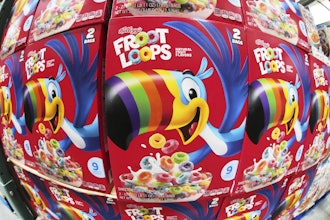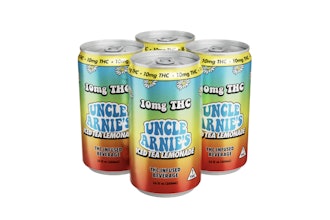ROCKVILLE, Md., Feb. 6, 2017 (PRNewswire) — Ice cream has a reputation for being a sugar-heavy, nutrition void calorie bomb—and rightfully so. But today's ice cream has the potential offer much more by adding much less (i.e., less sugar, less fat, etc.). Food industry marketers are astutely churning out a variety of healthier, yet still decadent, frozen treats to please modern American consumers, according to market research firm Packaged Facts in the new report, Ice Cream and Frozen Desserts in the U.S., 9th Edition.
"Ice cream and frozen novelties remain among the top ten food categories in supermarkets. More than 85% of U.S. household use ice cream or sherbet," says David Sprinkle, research director for Packaged Facts. "And despite the maturity of the ice cream market, a lot is happening in terms of new product trends and corporate development."
Notably, ice cream and other frozen dessert products have long been included in the ongoing development of the market for free-from foods. Dairy-free frozen desserts, usually water ice but also using vegetable oil of one kind or another, have been a common alternative to ice cream for centuries. For some favored these alternatives as a matter of taste, but for others it had to do with their being lactose intolerant, and so avoiding dairy-based products. In the last century, in response to dieter demands, ice cream makers added reduced- and free-from fat and/or sugar products. They also made products that were free of milk from cows given the bovine growth hormone rBST, which was considered by substantial numbers of consumers to be a potential health threat.
In the current market, ice creams and frozen desserts have added more items to the list of food components from which they are free. These include soy, gluten, artificial colors, flavors, and preservatives, and genetically modified ingredients. Products can also be organic, which is to say free of any pesticide residue, both real and philosophical.
Invariably this avalanche of new, free-from introductions will help the market overcome some of the lukewarm sales growth of recent years. Packaged Facts estimates that in 2016 the market for all ice cream and frozen dessert sales, including packaged ice cream and frozen novelties sold through retail channels and ice cream purchased at foodservice outlets, was just shy of $28 billion. Foodservice sales outpaced the retail channel by slightly more than $3 billion. Both segments are expected to see gains looking ahead to 2020.
About the Report
Ice Cream and Frozen Desserts in the U.S., 9th Edition covers the efforts of marketers that range from global food giants like Unilever and Nestlé to the newest start-ups. In doing so the report covers topics such topics as how marketers are responding to evolving consumer likes and dislikes, health concerns, foodservice consumption patterns, marketing and promotional activities, and other areas relevant to this always popular food category.
About Packaged Facts
Packaged Facts, a division of MarketResearch.com, publishes market intelligence on a wide range of consumer market topics, including consumer demographics and shopper insights, consumer financial products and services, consumer goods and retailing, consumer packaged goods, and pet products and services. Packaged Facts also offers a full range of custom research services. Reports can be purchased at our company website and are also available through MarketResearch.com.






















